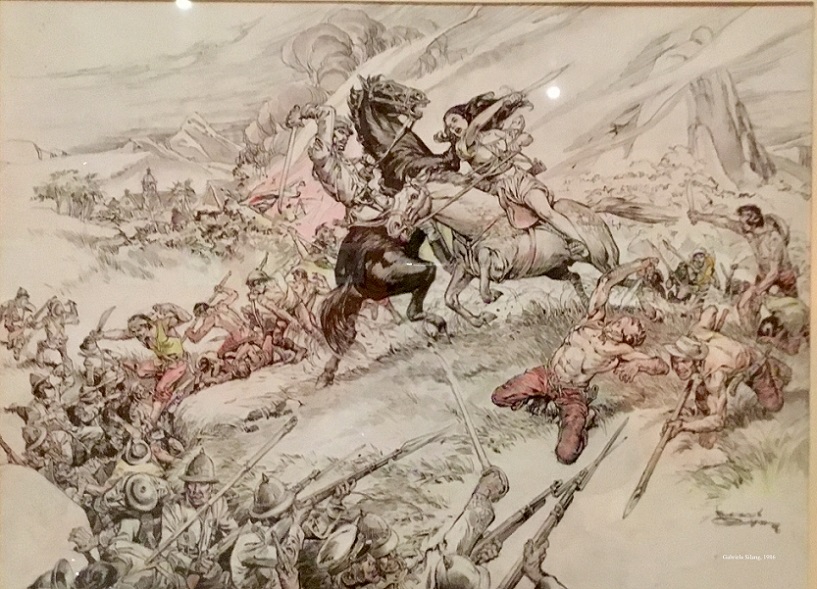
Gabriela Silang 1986
Once upon a time, a galaxy of comics characters that have become part of our collective consciousness—Kenkoy, Kulafu, Darna, Dyesebel, Kalabog en Bosyo, Mang Ambo, Ikabod Bubwit, Tisoy and his mom, Aling Otik, Baltic & Co, Zsazsa Zaturnnah, and many more— lived and thrived amongst us. Then, television came and people’s attention shifted from comics to the idiot box.
At the golden age of comics in the 1950s and 1960s, Francisco V. Coching (1919-1998) stood out as a prolific artist and a master storyteller. He wrote and illustrated some 63 serialized novels, with 51 adapted into films. Known as the Dean of Filipino Illustration, Coching was conferred posthumously as a National Artist for Visual Arts in 2014.
F.V. Coching: Komiks at Kultura runs until 03 February 2019, Ayala Museum, as part of its Images of Nation series. The exhibit features “original plates of covers, first issue spreads, character studies, illustrations and scaled re-colored reproductions” of Coching’s most popular works.
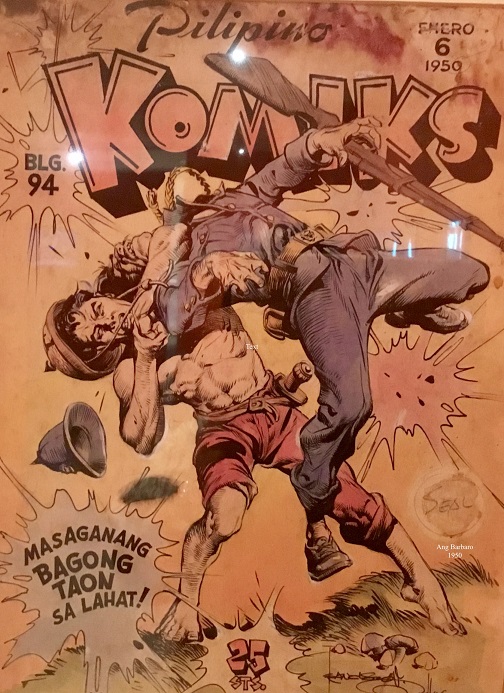
Ang Barbaro 1950
Of Heroes and Dreams
Just after the war and three years of a repressive Japanese regime, Coching’s strong narrative and characters stirred the popular imagination. His heroes, valiant men and women, tapped into the young nation’s aspirations into a future full of possibilities. The comics brought fun, laughter, wit, and satire to ordinary Filipinos, a respite from the hard realities of life.
In a video interview as part of the exhibit, F. V. Coching described his work process: one must have good angles and drawings are exaggerated a bit to make it look cinematic. And that it was not enough to be good in rendering, inking, shading, or even composition. The most important point was to pour out one’s feelings into the work to bring out its vitality and life.
The Personal
The son of Gregorio Coching, a noted Tagalog novelist and comics illustrator in Liwayway magazine, and Juana Vicente, Coching’s career as a writer-illustratorstarted at 15 years old when he created a cartoon strip Bing Bigotilyo for Silahis magazine in 1934. Through his father, he started working for the Roces Publications. Getting 50 centavos a day for his drawings, the young and good-looking Coching went to work in an americana suit, long before offices were air-conditioned in tropical Manila. In 1941, Marabini (marahas na binibini) was born in a fast-paced action series that became an instant hit but was cut short by World War II. In the same year, he joined a guerrilla group, the Kamagong Unit of the Hunters-ROTC.
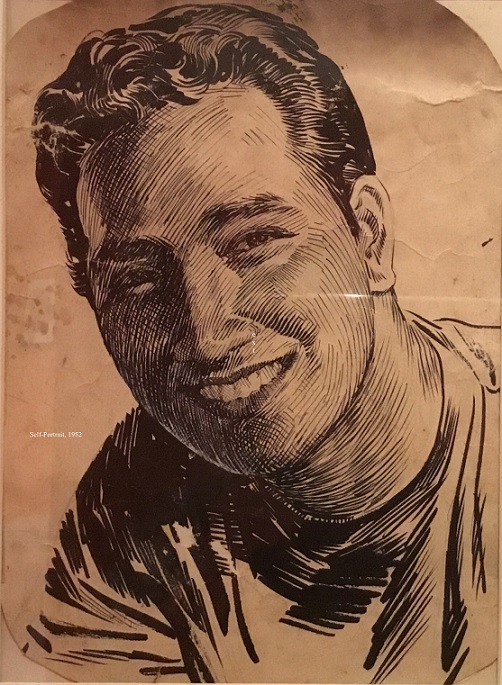
F.V. Coching self-portrait 1952
At the top of his game, he was writing and illustrating simultaneously three weekly series. But he retired abruptly at 54 in 1973 and devoted his time to his family with wife Filomena Navales (1924-2018); two of his children, Maridel and Lulu, have become artists in their own right.
He had worked for 34 years in Liwayway and Ace Publications, recounting it “as an exercise in pushing the mind and the hand to the utmost limit.”
Imagination Unbound
After the war, Coching produced Hagibis (1946) and his jungle world (inspired by Francisco Reyes’ Kulafu and Edgar Rice Burrough’s Tarzan) that became wildly popular and ran for 15 years in Liwayway magazine. Coching was most productive in the 1950s, with many of his most loved characters created during this period and made into movies that made money:Palasig, Sabas ang Barbaro, El Indio, Maldita, Pedro Penduko, Lapu-Lapu, Movie Fan, Gigolo,Talipandas, Ang Maton, and Condenado.
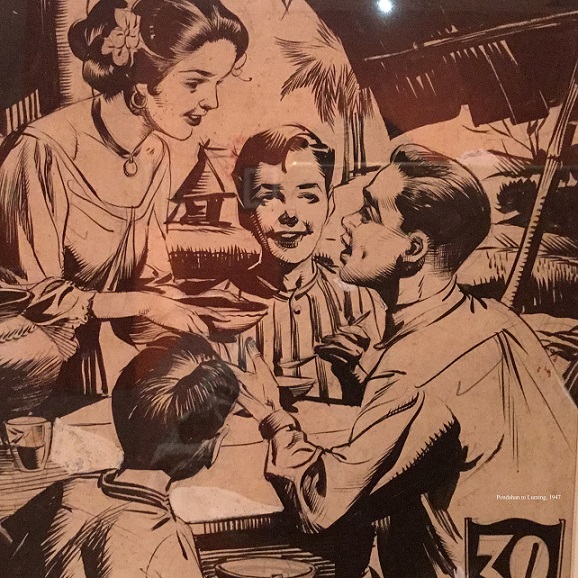
Pondahan ni Luming 1947
Coching said that his stories come from real life mostly and that some of his story plots were based on his experiences.On the other hand, his wife Luming who helped him trace out his story texts, observed that he would come out with both dialogue and plot on the spot and that she could not tell where the episodes were heading. “The way he did it, it was always pure imagination, a thrilling surprise. If he took anything from real life, I could not recognize it.”
His body of work is filled with “a strong narrative flow, brimmed with drama, and…punctuated by action and suspense” as described in theCCP Encyclopedia of Philippine Art, 2017.
Lookinginto Coching’s original works offers a rare chance to see closely into the process of his work,and to appreciate allthe intricate details of the original art that are often lost in reproductions.
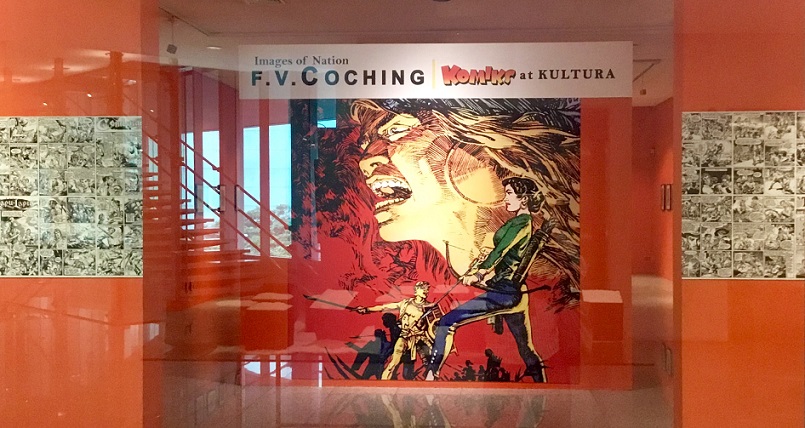
F.V. Coching at the Ayala Museum
